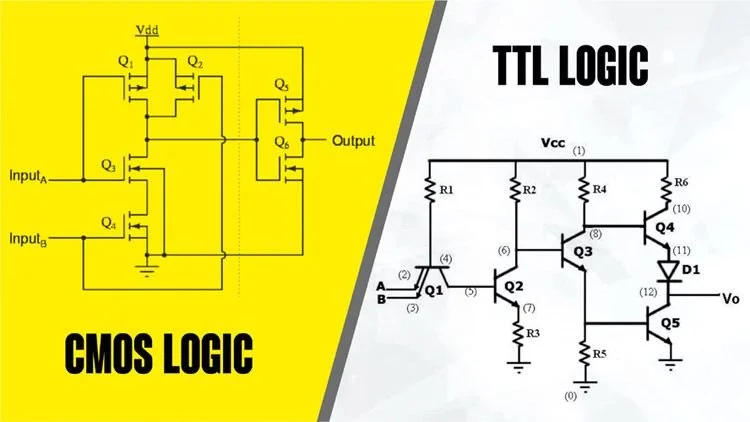Evolution of Logic: From TTL's Electrifying '60s to CMOS's Power-Sipping Dominance 🌟💻
Back in the swinging '60s, the tech scene was a giant (literally), with pieces like vacuum tubes and clunky relays. Then along came TTL! 🦸🏽♀️💡 TTL (Transistor-Transistor Logic) used transistors to make circuits smaller, faster, and way cooler ❄️ TTL didn't just change the game; it started a whole new one! 🌐🎮
And then the cool new kid on the block arrived – CMOS 😎 CMOS (Complementary Metal-Oxide-Semiconductor) logic is the heartthrob of modern gadgets, from sleek smartphones to brainy microprocessors, sipping on power like it’s a fine wine 📱🍷
🌟TTL Logic Levels:🌟
⚡Typically uses a 5V power supply.
⚡A logical '0' (LOW) is generally defined as 0 to 0.8V, and a logical '1' (HIGH) is 2V to 5V.
⚡Faster switching times compared to earlier logic families but consumes more power.
⚡Used in earlier digital systems but now mostly replaced by CMOS in many applications.
🌟CMOS Logic Levels:🌟
⚡Can operate on a wider range of power supply voltages (commonly 3.3V, but it can be lower).
⚡A logical '0' (LOW) is close to 0V, and a logical '1' (HIGH) is close to the supply voltage (Vcc).
⚡Lower power consumption compared to TTL, especially when not switching.
⚡More susceptible to static electricity damage but offers higher density (more logic gates on a chip) and lower power usage.
🌟Key Differences:🌟
👉🏽Power Consumption: CMOS is eco-friendly, saving power like a pro. While TTL is power-hungry 😋
👉🏽Speed: TTL takes the trophy on the speedway. Zoom zoom! 🏎️💨
👉🏽Noise Busters: TTL laughs in the face of noise – bring it on!
👉🏽Voltage Levels: CMOS is the yoga master, stretching across various voltage levels. 🧘
